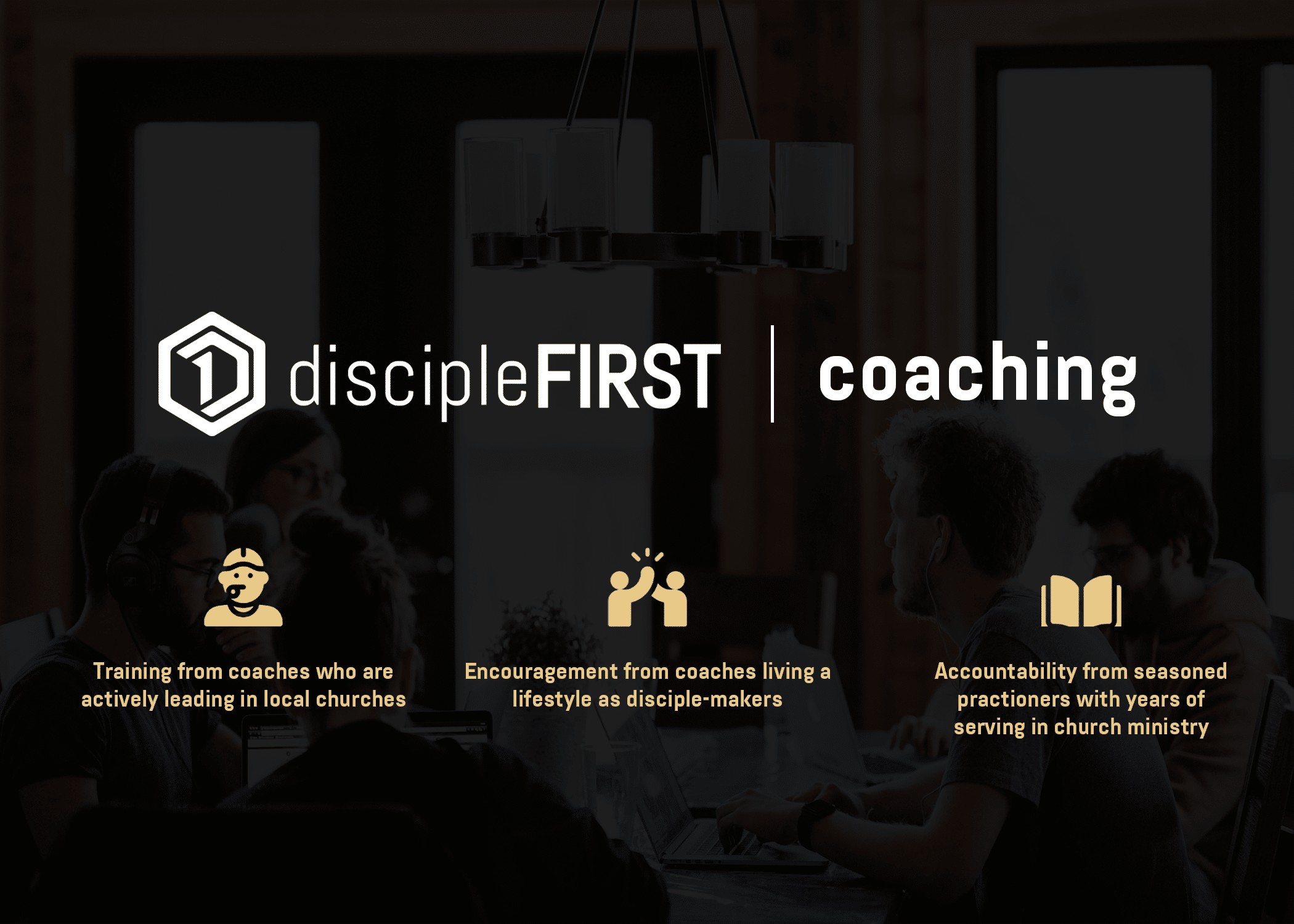Evaluating church programs with a disciple-making focus
Once you have established your definition of a disciple, hard-wired your process, begun to live it out personally, and raised up a disciple-making team, you will be ready to begin to evaluate the programs in your church.
The slow drift from good intentions to sacred cows
Let’s be honest. Most programs begin with good intentions, but over time these programs can become dated and ineffective, slowly turning into sacred cows or entrenched traditions. These programs usually garner tremendous support. They are often vigorously championed and are highly charged with emotion.
Asking the hard questions about effectiveness
Every church has programs like this. It is easy to just keep doing them because we have always done them. But a disciple-making church is constantly evaluating the effectiveness of every program, event, or initiative and asking the hard questions:
- “What part of the strategy is this accomplishing?”
- “Is this really working?”
- “Is there a better way to be more effective?”
The power and potential pitfalls of tradition
Why traditions matter in families and faith
Traditions are not bad. In fact they can be incredibly powerful. We have certain traditions in our house that we have kept for years. Every Christmas Eve, our family gathers for a special lunch. We always eat the same things: Cornish hens, stuffing, veggies, sparkling cider, and some great dessert. It’s our tradition. At that time, the girls always get their first Christmas gifts, which are traditionally always pajamas. We also read passages written on cards about the birth of Jesus and light the candles on an Advent wreath. Then we clean up and head out for a long evening of Christmas Eve services.
It’s our tradition. We have done it for over twenty years, and we love it. Traditions are powerful because they have a way of reinforcing values and passing down truths from one generation to the next. That is why God proscribed that the Jewish people celebrate certain feasts and festivals throughout the year. They were strongly held traditions intended to pass on spiritual truths to the next generation.
Of course, over time, the Jewish people developed all kinds of traditions that were added to the biblical mandates. I can’t help but think about Tevye’s opening monologue in the musical, “Fiddler on the Roof.” “We have traditions for everything. How to sleep, how to eat, how to work, how to wear clothes. For instance we always keep our heads covered and always wear a little prayer shawl. This shows our constant devotion to God. You may ask, ‘How did this traditions get started?’ And I’ll tell you…I don’t know. But it’s a tradition.”
Every time I hear that monologue I smile because it’s so true, especially in churches. We have a knack for doing one thing, and if it’s successful then we keep doing it, regardless of the long-term effectiveness, until we drive it into the ground. It’s a tradition. These traditions may involve certain musical performances, how people dress, the order of a service, the locations of certain groups, or the use of certain facilities.
When traditions take priority over mission
If we are not careful, our traditions can get in the way of accomplishing the church’s mission. A good friend told me recently about how one church was reaching many young families. So many were coming that there was no more room for these families to meet in groups on campus. The pastor noticed a formal parlor in the church sitting unused and proposed that the room be renovated for this new, growing segment of the church. Plans were drawn, bids were let, and contractors were appointed. But at the last minute, a large donor who initially gave money for the parlor to be built years ago privately protested to the lead pastor.
A real-world example of misplaced priorities
Immediately, the job was scrapped and the parlor stayed intact and vacant. Every church has traditions. There is nothing wrong with that. But when those traditions become obstacles to making disciples, then we have a problem. While that is obvious to most leaders, knowing how to navigate the turbulent waters of change can be extremely difficult and hazardous.
The moment tradition becomes more important than people
When change is resisted at all costs
I knew one pastor in Oklahoma City who stepped into a dying church. Before long, he was reaching out into the community and bringing new people into the aged congregation. For the first time in years, baptisms were up and people were joining. That’s all good, right? Wrong. The pastor was quickly fired because the parishioners didn’t want “those people” coming into their church.
A defining moment for every church
That, my friend, is the death rattle of any congregation. The moment traditions matter more than the mission, the church is on the way down. Most cases are not so obvious.
The need for strategic change
Change is inevitable for churches that make disciples
Maybe a men’s event needs to be stopped so that another initiative can begin. Maybe a Christmas program is waning in impact and needs to be refreshed or replaced. Maybe the church needs to rework its worship style, group strategy, or leadership development plan. How do you go about changing the culture of a church to become more aligned with disciple making? That’s what I’m going to share with you in this chapter. You see, some things will have to go in order for new things to come.
The reality of limited resources
You simply can’t continue to add new plans, new initiatives, and new strategies and maintain the old ones at the same time. Why? Because you don’t have unlimited resources. You don’t have unlimited time, unlimited money, unlimited volunteers, unlimited capital, unlimited space, and unlimited talent. So if you are going to make disciples, you are going to have to leverage the resources you do have in the most effective way possible. To accomplish this means things in your church will eventually have to change.
The danger of misalignment
The consequences of sticking with misaligned programs
Let’s just say it out loud. We are addicted to programs. We are tied to our traditions. Just as an addict reacts emotionally when weaned off of his drug, people react negatively when their favorite program is changed or canceled. This reality has kept even the bravest leaders from making necessary changes lest they find themselves looking for other employment! So, why risk it? Why make changes?
The answer is the danger of misalignment. Ask your mechanic what happens when your tires are misaligned. Ultimately, the excess rub and drag of one tire misaligned will lead to a blowout. I remember sitting in a leadership training seminar. They showed us a picture of a championship rowing team. Each team member was in his place, rowing in perfect precision. Each one was doing exactly his part. They were completely aligned to accomplish their goal.
Now imagine the same team, but this time one member is out of sync. His oar is colliding with the others or dragging in the water too long. Maybe he doesn’t like facing in the same direction as everyone else and wants to change his seat. What is he doing? His misalignment is hurting the team and ultimately the cause. When you have programming that is good, but is not aligned to your disciple-making philosophy of ministry, it hurts the team and the cause.
Understanding the impact of misalignment
Misalignment is dangerous. For example, misaligned programs distract. They distract people from being involved in the missioncritical initiatives. Misaligned programs dilute resources. Finances, facilities, and leadership given to these programs take away from more important and effective plans.
Misaligned programs clutter the schedule and compete for promotional time. Misaligned programs are not strategic. They move by their own inertia, not because they make a significant contribution to the direction of the church. Misaligned programs are often “off limits” to any critical assessment. Their results and effectiveness are seldom evaluated.
A strategic approach to change
What can be done about the misalignment in your church? Well, I don’t recommend that you unilaterally decide what needs to change and announce it from the platform on Sunday. Abrupt changes only engender defensiveness and conflict. Don’t say, “I’ve decided we are going to be a disciple-making church and so we are going to scrap all that we have been doing and go in a new direction.” That might be your last sermon. Even Jesus drew a hostile reaction in Nazareth when he proposed a change in their thinking. The better way is to lead your church to embrace and celebrate a culture of ongoing evaluation.
Key steps to planning and evaluating ministry
The role of evaluation in a disciple-making church
A healthy church is constantly evaluating its programming to ensure that it is producing fully mature and reproducing disciples. You are clear on your final product: a 3D disciple.
Defining the process for effective change
You are clear on the four-step process for making disciples: Explore, Connect, Grow, and Go. You have effectively discipled men and women who are faithfully reproducing, moving many of them into leadership positions. Now you are ready to move into the evaluation stage.
This blog features an excerpt from one of our books, Bold Moves.







